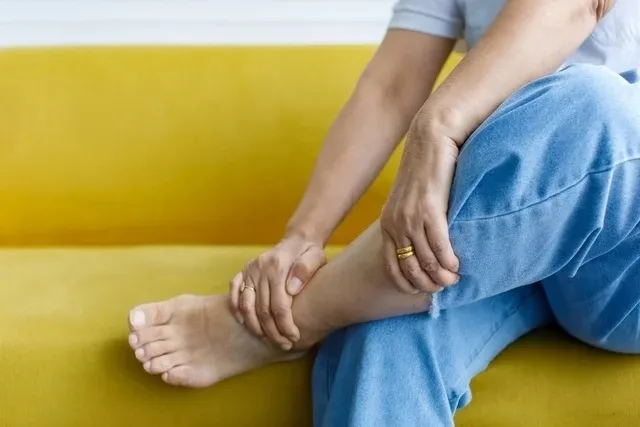Diabetes has no cure and the person who suffers it must make great changes in their life to prevent or delay damage to their organs.It is that this disease, over time, can trigger heart, cerebrovascular and renal conditions, as well as vision deficit, and even blindness.
The main tool to control the effects of diabetes is to supervise blood glucose levels, the sugar we incorporate through food and that, in this case, is not processed correctly.
For diabetics, carelessness can be dramatic.Not only in the long term, but in everyday life.It is that excess sugar in blood vessels can also alter the nerve fibers that impulse from the brain to the different areas of the body, especially muscles.
This "short circuit" affects mainly on the feet, legs, hands and arms.Burning, tingling and sensation of sharp punctures are some of the most frequent inconvenience.Here we tell you how to avoid and reduce diabetes pain.
How to reduce diabetes pain
One of the most serious consequences of diabetes is the damage of the nervous system.Sugar values above normal, combined with other factors such as arterial hypertension, excess weight and high cholesterol, can trigger what is known as peripheral diabetic neuropathy.
A complication that usually begins in the muscles of the feet, legs, hands and arms producing greater sensitivity, numbness, infections and pain in the bones and joints, according to the CDC portal, of the National Agency of Public Healthof the United States.
Nerve damage can also expand to other areas such as a thigh, a hip or a buttock or cause intense stomach pain, discomfort behind an eye or tingling in the hands or fingers, among other ailments indicated by the site.
prevent and avoid pain
Diabetic neuropathy, an alert that indicates the aggravation of the disease and causes intense muscle and bone pain, can affect up to 50 percent of people with diabetes, indicates the site of the Mayo Clinic, of the United States.However, their appearance or progress can be regulated with blood glucose routine controls and with a healthy lifestyle.
In this regard, for the Healthline portal, a physical activity routine and avoid smoking will help in the integral treatment, always under the supervision of the medical team.According to the site, some alternative therapies, such as acupuncture, could contribute to reduce muscle pain if used together with medications.
The Mayo Clinic also states that among the sale treatments with medical recipe to relieve nerve pain linked to diabetes are several used to treat epilepsy crisis, antidepressant medications or serotonin inhibitors.
a symptom of hyperglycemia
Although headache is usually a common ailment, it is sometimes related to diabetes.Is that hyperglycemia (excess blood glucose) can also produce headache when the necessary treatment and controls are not met.
Hypoglycemia also causes headaches, sweating, tremors, dizziness and other symptoms such as irritability and confusion.
In both cases, specialists recommend drinking water to prevent dehydration and, in case the annoyance continues, consult the personal doctor to evaluate a change of medication.
a silent pain
One of the weakest diabetes points are the feet.But just as some people suffer strong discomfort andDolores, in others the process of deterioration of the nerves is silent and the consequence is a drastic loss of sensitivity.Not feeling cold, heat, or pain, it can happen that the person suffers a hurting or even ulcerations or sores to which he does not pay attention and does not attend in time.
“If you get a blister, you may not feel it and it gets worse.Even small wounds or ampoules can become a problem if an infection develops or does not heal, ”describes the Medlinplus site, of the United States National Medicine Library.
The truth is that, if they do not receive the proper treatment, these ulcers are the most frequent cause of finger amputation, feet and legs in people with diabetes.According to the document “Guidelines for the Prevention and Approach of the Diabetic Foot”, presented by the Ministry of Health of the Argentine Nation, it is estimated that 25 percent of people with diabetes will develop a diabetic foot ulcer in their life.And from 30 to 40 percent of these ulcers will reappear within the first year.
According to the same study, amputations in people with diabetes are 20 times more frequent than in the general population.
In short, for patients with diabetes, having an ulcer on the feet or legs, even if they do not feel pain, it must be sufficient reason to attend a consultation with your doctor.


